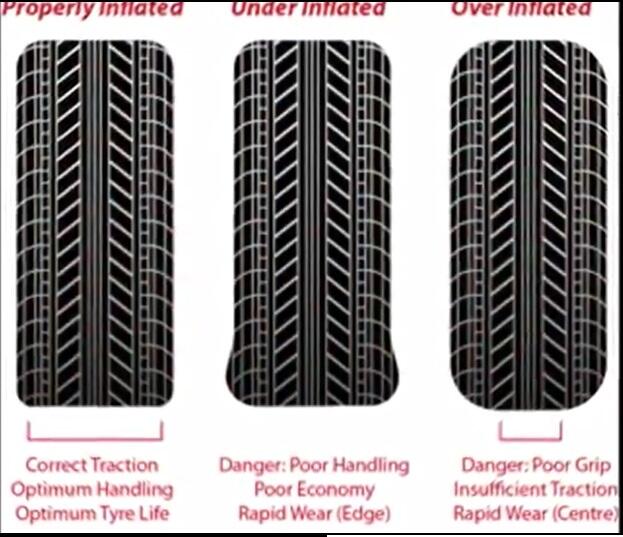Between ice, snow, and slush, and sometimes the glaring sun in your eyes, winter driving can be challenging. In some areas of the country, we haven't even seen the worst of it! Thankfully, slipping and sliding in these conditions doesn’t have to be a guaranteed part of winter driving. A few simple tricks could help improve your tires' grip and ability to perform in rough winter weather.
You can help a front-engine, rear-wheel vehicle gain traction in slippery (even muddy) conditions by adding weight to the back of the vehicle. By doing so, you're adding weight on the axle that provides power. "If there's weight on the axle and tires which spin," writes The News Wheel, "the car can grip better."
In a car, this means loading up the trunk. In a truck, this means loading up the bed. You can use sandbags, boxes of kitty litter, or even bags of dirt. On the plus side, sand and dirt can be used in your yard come spring, and kitty litter can be used to absorb oil spills in the garage! Talk about multi-purpose materials.
You won’t need to worry so much about maneuvering your vehicle through thick snow if someone else has already cleared a path for you. When you’re navigating streets that have already been driven on, stay in the tracks of other vehicles. Keep in mind that tightly packed snow can still be slippery, so adjust your speed to the conditions at hand (and check out other great winter driving tips from Bridgestone Winter Driving School Director Mark Cox).
These socks aren't like the ones Grandma knits for you each winter! These socks are actually for your vehicle. Tire socks, also called snow socks, are similar to snow chains in that they go directly around the tire and help enhance grip in winter conditions. However, tire socks are made entirely out of fabric, hence their name. The fibers are arranged in such a way that the snow and ice stick to them as you drive, making your tires "grippier" than they might be otherwise. Installation is straightforward but does require a bit of elbow grease.
Installation is straightforward but does require a bit of elbow grease.
Like tire socks, snow chains help drivers maintain control in slippery conditions by providing increased traction. Make sure to buy the proper size to fit your specific tires and vehicle, and read the installation instructions thoroughly.
On rear-wheel drive vehicles, snow chains will go on the back tires. On front-wheel drive vehicles, they'll go on the front tires, and on four-wheel or all-wheel drive vehicles, they'll go on all four tires. Practice installing the chains at home, before you desperately need them! This will make it easier and less stressful to install them when it really matters. If you already have snow tires, tire chains might be unnecessary depending on your climate. Speaking of snow tires...
"For most snowbelt drivers," writes Consumer Reports, "dedicated winter tires are more practical and versatile for the wide variety of wintry conditions.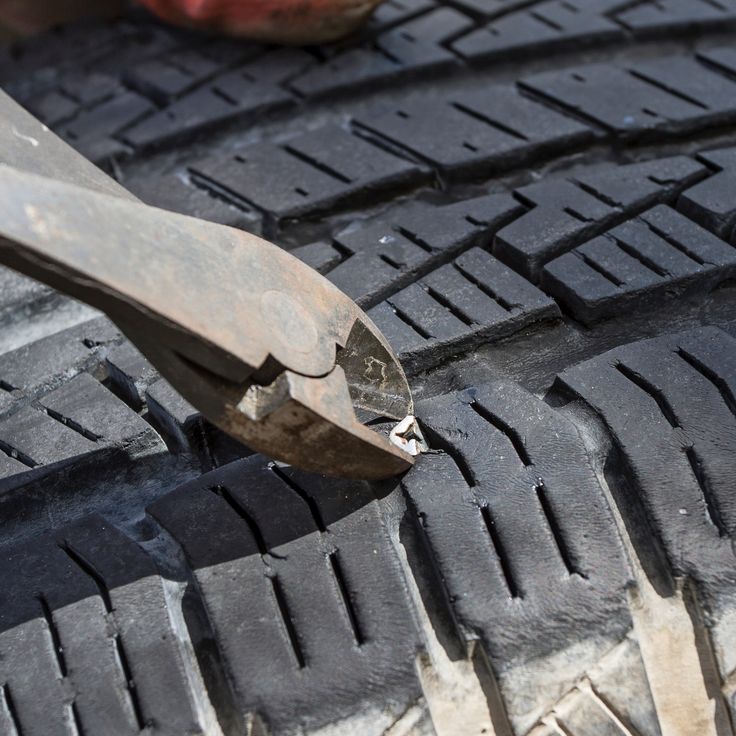 " If it's the right move to make for your climate and vehicle, investing in winter tires is one of the best moves you can make for your vehicle and your safety. Winter tires are designed to maintain their performance not only in icy, snowy, or slushy conditions but also in cold, dry weather. Winter tires will help you get a solid grip on the road for confident driving!
" If it's the right move to make for your climate and vehicle, investing in winter tires is one of the best moves you can make for your vehicle and your safety. Winter tires are designed to maintain their performance not only in icy, snowy, or slushy conditions but also in cold, dry weather. Winter tires will help you get a solid grip on the road for confident driving!
Prepare yourself—and your vehicle—for the rest of the winter. While these tips may help tremendously, there's no substitute for good winter tires when you live in an area that experiences rough weather. Get an instant quote for winter tires online or visit your local Firestone Complete Auto Care to learn more today. Winter won’t work around your schedule, but we certainly will. Our tire shops are open late and on the weekends, so when you need us, we’re there!
Features, Racing I By Ross Bentley I August 10, 2015
You know, it would be so much easier if we could just set our tire pressures, select any old set of springs and dampers, and just drive the car. I suppose we could, but that would definitely not lead to the best handling car. So, what to do – how do we figure out what tire pressures to run, and when to soften or stiffen the springs on our car? Just ask… someone like Jeff Braun, race engineer extraordinaire. -Ross
I suppose we could, but that would definitely not lead to the best handling car. So, what to do – how do we figure out what tire pressures to run, and when to soften or stiffen the springs on our car? Just ask… someone like Jeff Braun, race engineer extraordinaire. -Ross
| Do I go softer or stiffer to make grip… or, do I add or reduce air pressure to make grip? Springs or tires? I often get asked those simple questions by club racers, and they sometimes are embarrassed to be asking me, assuming that must be “Car Set-up 101.” Let me tell you – it’s something every top race engineer struggles with every day, every weekend. There just is no right answer. Like so many things in racing and life, ”It just depends.” Depends on what? Well, that’s a long list but let’s take a look at some considerations to help you figure out if you should make the end of the car that is sliding stiffer or softer. |
TRACK GRIP
This is likely the single most important factor to deciding stiffer or softer… and, as it turns out, the most difficult to quantify. We can measure so much today with data systems, and get so much information from the track regarding timing and scoring, but I have yet to see the “track grip” sensor. Actually, I have seen it and it rests in the seat of every race car! I learned how to use this sensor when karting in Europe with my son. The tracks change grip so much during an event: from super slick and slippery at the start of a weekend to so much rubber that they have to suspend racing to literally scrape the rubber off the track. The kart frames were digging into the rubber, and drivers are 2-wheeling and flipping over!
So, what you need to do is gauge the track grip with your butt sensor and make notes, then build a database of changes based on the perceived level of grip you feel.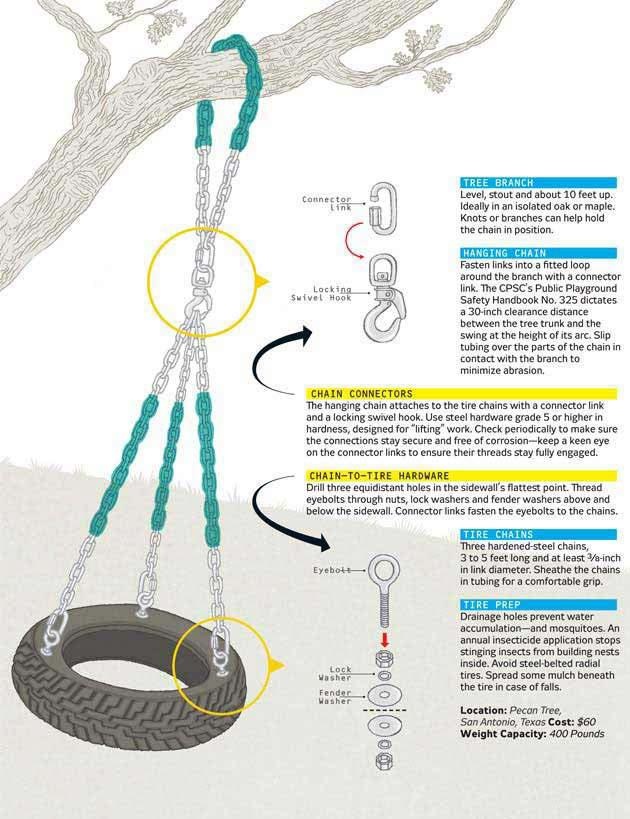 In general, if you feel the grip is low, you must be easier on the tire, and load it gently and over a longer period of time. There is no grip on the track to hold a sudden load – the tire will just slide because there is nothing to grip into. Think what would happen if we were racing on a hockey rink. You would not want a super-stiff car, but instead, you would want a soft, plush car that did not shock the tire hard and make it slide.
In general, if you feel the grip is low, you must be easier on the tire, and load it gently and over a longer period of time. There is no grip on the track to hold a sudden load – the tire will just slide because there is nothing to grip into. Think what would happen if we were racing on a hockey rink. You would not want a super-stiff car, but instead, you would want a soft, plush car that did not shock the tire hard and make it slide.
If we have tons of track grip, we don’t have a need to gain more grip, right? Well, often it’s a balance problem, where one end of the car has more grip than the other. We, for sure, don’t want to make the stuck end of the car worse, and take grip away. We want to make the lower-grip end catch up to the good end. So we need to make a bit more grip on an already high-grip track surface. Many times in this situation (notice I don’t say all times), we need to go stiffer to make grip here. If we don’t load the tire hard enough, and fast enough, it sort of slides over the sticky surface and is never given a chance to be forced into the grip that’s there. Other times, the car rolls so much (because it’s making great grip from the track surface), that the suspension is rolled over and the geometry is all messed up, causing that end of the car to be “out of the design limits.” Then we need to control the “platform” better to make grip. This is very common in an aero car where the underwing is rolled over too much, causing a loss of downforce.
Other times, the car rolls so much (because it’s making great grip from the track surface), that the suspension is rolled over and the geometry is all messed up, causing that end of the car to be “out of the design limits.” Then we need to control the “platform” better to make grip. This is very common in an aero car where the underwing is rolled over too much, causing a loss of downforce.
So what about tire pressure in this whole discussion? It follows the same guidelines. As a rule of thumb, a race tire will gain 50 to 100 pounds/inch of spring rate for each 1 psi increase. If we have grip, we may be in a situation where the tire sidewall is rolling and squishing and moving all over the place, causing grip loss as the tread tries to keep up. Then we need to increase pressure, stabilizing the tire carcass, and at the same time, gaining some spring rate.
No track grip: less air, be nice and soft, and load the tire easy (remember, we’re on that hockey rink now).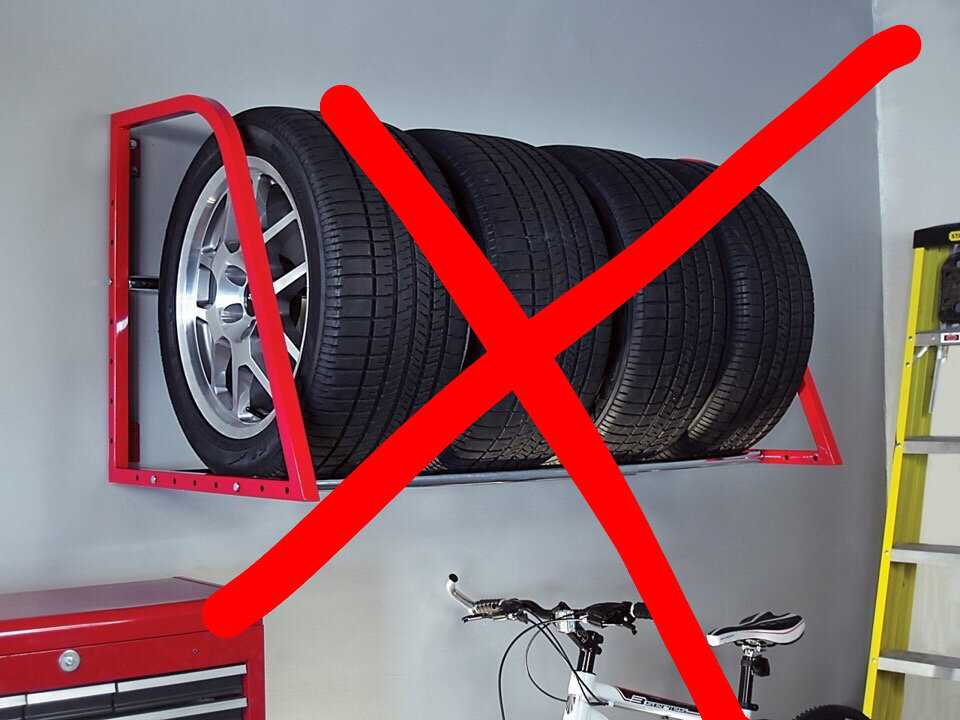
DOWNFORCE CARS
This is a special case where the car is making aerodynamic downforce, and that increased loading needs to be supported with a stiffer spring/bar/damper package. If you let a flat-bottom downforce car move too much, the downforce produced by the floor is reduced. So it’s possible that no matter the track grip with a downforce car, you may need to reduce the movement of the downforce-producing components to increase grip by stiffening the set-up. As you can see, it gets tricky with a downforce car when the track has low grip, as the usual approach would be to soften the set-up, but an aero car needs to be stiff to maintain downforce.
DRIVER STYLE
If a driver is smooth, and good at balancing the car with left-foot-braking, then the engineer can usually use a softer car to make grip, and the platform control consideration is reduced on downforce and non-downforce cars alike. A “stomp on the brakes and turn” driver will struggle with a soft car, even if the track grip is low – so you may need to go stiffer to make grip just because the driver is so abrupt that he is upsetting the grip, causing your problem, and that overpowers your track grip analysis.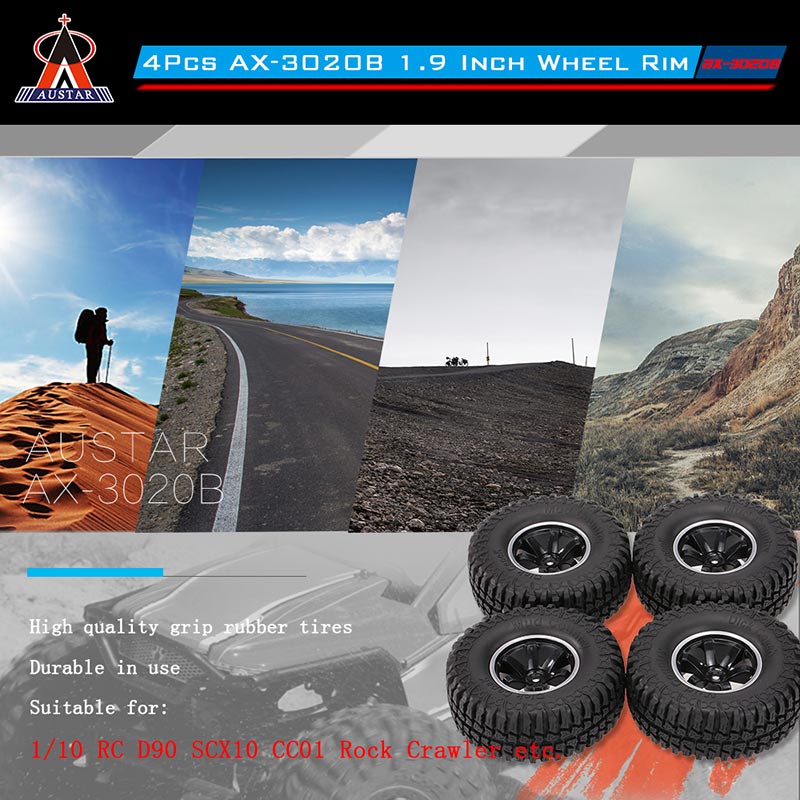
OTHER CONSIDERATIONS – SECONDARY EFFECTS
Every change you make to a race car has at least one secondary effect. Always consider that and try to pick a change that has a secondary effect that helps your situation.
Tire life
Softer will help tire life. At a place like Daytona for the 24-hour race, you may want to be stiffer for the Bus Stop and in the banking, but you must consider being able to double-stint tires, and the increased out-lap performance on warm tires, and weigh that against the softer set-up.
Curb use
Many tracks have curbs that, if you can run over them at the apex or exit, will greatly reduce lap times. Softer springs/bars/dampers/tire pressures will help the car ride these curbs, but that often goes against the need for a stiffer set-up on a high-grip track, or a downforce car.
A few rules of thumb on this subject (just remember that rules of thumb are just that because they are right 51% of the time, and not all the time):
1.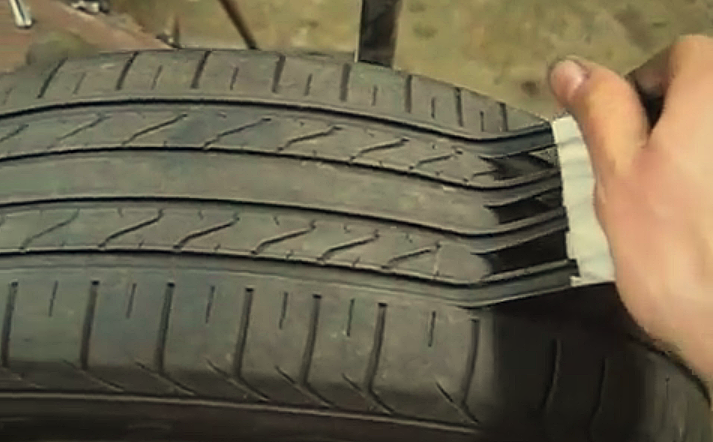 If you’re doing track days with GT cars on tracks where most cars are on DOT tires, then you’re likely on a low-grip track, and should try softer to make grip first.
If you’re doing track days with GT cars on tracks where most cars are on DOT tires, then you’re likely on a low-grip track, and should try softer to make grip first.
2. If you have a stock, softly-sprung car, and it feels like it leans over a lot in the corners, then breaks free later in the corner, you’re likely too soft and the suspension is out of the design limit, causing the loss of grip. Go stiffer.
3. If you’re on a super-soft race tire, then grip on the track is not as important. You’re getting your high grip from the tire. So, if you’re rolling over and losing grip, go stiffer.
4. Going softer will usually make more grip. That’s the way to bet, if you don’t have any ideas.
5. Karting at a high level in national events will teach you this subject in a hurry. Top kart tuners and drivers are the world’s experts in track grip analysis.
6. Remember that on busy pro race weekends, track grip will be a moving target, and you may need to anticipate these changes and adjust the car in anticipation of what the grip WILL be.
Keep good records of what the track grip level feels like to you, and how the changes you make changed the grip and balance; you will soon have a good understanding of when to go stiffer and when to go softer. If you figure it out, please let me in on the secret… it’s been puzzling me for 40 years!
– Jeff Braun
Facebook: facebook.com/AutoRacingTechTips
Twitter: @jvbraun
90,000 9 ways to improve tires with roads (if you got stuck) - a magazine driving
Lada
UAZ
KIA
Hyundai
Renault
Toyota
Volkswagen
Skoda
Nissan
Nissan
NISSANA
NISSAN
Mercedes-Benz
Mitsubishi
Mazda
Ford
All brands
The simplest thing is to ask someone to help. Pushing the car in most cases is more effective than all of the following methods. But what if there is no one around? Here is the experience of the experts behind the wheel.
But what if there is no one around? Here is the experience of the experts behind the wheel.
Related materials
4 simple tricks to not skid
One hundred million road repairs spent on one hundred thousand bad road signs the motor no longer plays a role. Lie on your belly, ditch the clutch - in short, it will become very bad. Usually in such situations, a person begins to violently throw boards, branches, floor mats under the wheels - in general, everything that comes to hand. Sometimes it even helps. And what if there is nothing like that at hand? Let's think about what to do.
Coupling weight is the part of the weight on the driving axle of the vehicle. By increasing the grip weight, you can improve the patency of the car - the technique has been known for a long time. Roughly speaking, in the stuck Zhiguli, it was necessary to transfer a heavy passenger from the front seat to the back seat, or even better, into the trunk.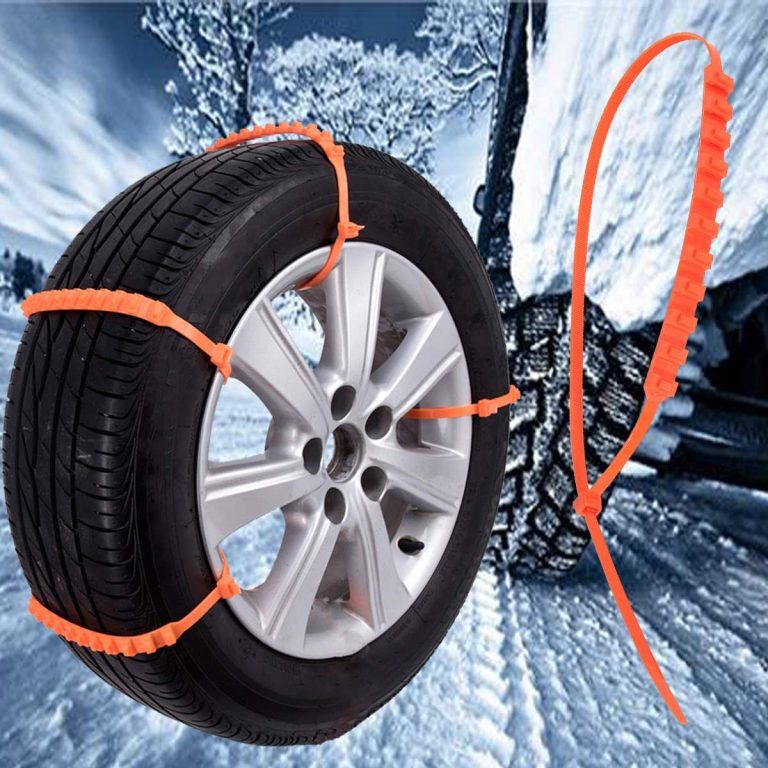 But in a front-wheel drive car - somewhere forward, even on the hood ...
But in a front-wheel drive car - somewhere forward, even on the hood ...
A car stuck in the snow can be helped by... aerosol cans with the appropriate potion inside. They are called differently - something like "Spray for gripping tires with ice." Such a tool really improves traction on an icy road, albeit for a short time.
It is unlikely that such wicks will really help a person who accidentally drove into a snowdrift, but they are found on sale. We are talking about spikes - removable and repair. With repair, in general, everything is clear: they are intended to replace full-time "deserters" who arbitrarily left their places in tires. But repair ones are gadgets for an amateur. In fact, they are self-tapping screws, which, unlike repair colleagues, have sharp tips. It doesn't cost anything to pierce a tire through and through to finally improve the mood of a stuck driver. And it’s not clear at what point it makes sense to screw them in somewhere. In general, it's hard to recommend this.
In general, it's hard to recommend this.
An old soldier's way to increase patency on any road is to reduce tire pressure. At the same time, the area of \u200b\u200bthe coupling surface increases and the chances of getting out of the trap increase. It is advisable not to forget that in the wild you need to return the pressure to normal.
One of the funniest tools available to help a car out of a trap is a jute potato sack. They poured potatoes somewhere, put an empty bag under the slipping wheel and ... In general, such a “spell” usually helps!
An expensive analogue of the above-mentioned bag is automobile tracks, they are also anti-boxes, they are also sand-trucks. These are profiled plates made of metal or plastic. Using them is not very difficult: just push the "device" under the buried drive wheel in the direction of the car.
Wristbands are the most popular purchase solution. In fact, this is a chain sawn into pieces. 3-4 pieces are put on each wheel, although sometimes one is enough to get out of the trap. They can be mounted both in advance and "after" - although the latter, of course, is nastier and heavier. The more bracelets on the wheel, the better. Separately, we note that the bracelet is not a type of chain, and therefore, where Europeans have hung signs requiring chains, they will not let you in with bracelets.
In fact, this is a chain sawn into pieces. 3-4 pieces are put on each wheel, although sometimes one is enough to get out of the trap. They can be mounted both in advance and "after" - although the latter, of course, is nastier and heavier. The more bracelets on the wheel, the better. Separately, we note that the bracelet is not a type of chain, and therefore, where Europeans have hung signs requiring chains, they will not let you in with bracelets.
Wheel straps, often referred to as pads, are also a simplified version of the chains, which are less durable. A kind of pampered option that will not always help.
The chain is a powerful off-road tool. Their service life is higher than that of belts or bracelets. It is better to mount them before getting into an ambush. There are both "snow" and "mud" chains. Any chains help to keep the car in oncoming sidings with a slope of the road.

Photo: depositphotos.com
9 ways to improve tire grip (if you're stuck)
9 Ways to Improve Tire Grip (If You're Stuck)
9 Ways to Improve Tire Grip (If You're Stuck)
9 ways to improve tire grip (if you get stuck)
Our new video
A new brand has appeared in Russia — we are testing its first crossover
New Russian SUV: we all really need it!
An interesting (and inexpensive) car from Lipetsk: everything is different here!
Did you like the note? Subscribe and you will always be in the know!
Driving on Yandex.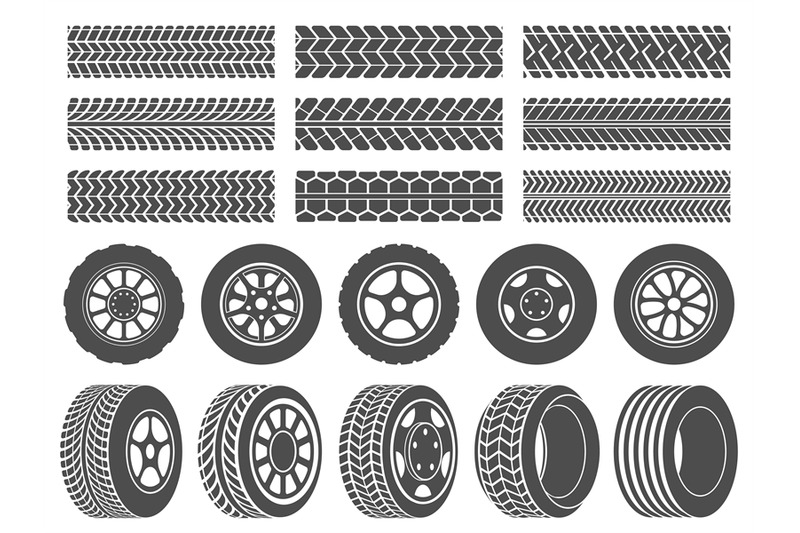 Zen
Zen
News smi2.ru
In the last article, I briefly described what determines the grip of the tire with the road in terms of physics. All special reference books and scientific papers known to me describe the adhesion force of tires with the expensive well-known Amonton-Coulomb formula: F = µmg, and it is perfectly confirmed by practice, despite its simplicity. As a result, we have the only parameter included in this formula and related to the tire - the coefficient of adhesion. And behind the external simplicity of the Amonton-Coulomb formula, a rather complicated process is hidden, since the friction coefficient is not constant and clearly depends on a number of other parameters:
Here we will talk about them in the following article.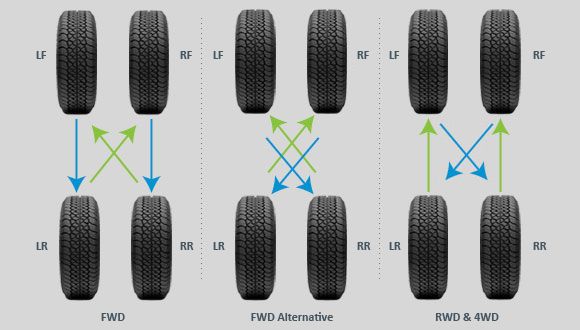
This is the most obvious parameter influencing tire grip and does not need much discussion. Even a child knows that ice is slippery, but asphalt is not. Here is a classic set of tire adhesion coefficients with different road surfaces:
0.1
0.05
Values are sampled, may vary and, in addition, were relevant 20-30 ago. According to some reports, modern tires can provide grip on dry asphalt with a coefficient of 1.0-1.1. So, it is quite possible that the plate is outdated, but I still recommend that you focus on it - you will be safer
Practical advice
1. Remember that the condition of the road surface has a very, very strong effect on tire grip.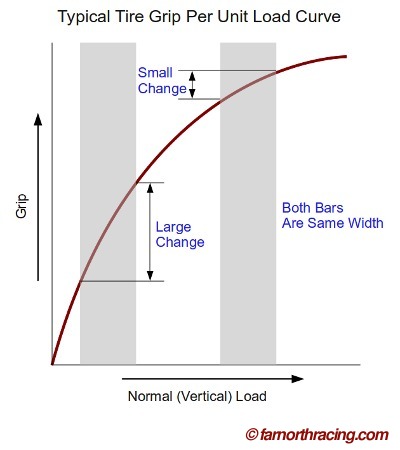 The braking distance on ice in winter can exceed the braking distance on asphalt in summer up to 10 times. Even in summer, when it rains, the braking distance can be doubled compared to the braking distance on dry pavement. So always think about the type of surface you are driving on and choose the appropriate distance from the lead car and speed before the turn.
The braking distance on ice in winter can exceed the braking distance on asphalt in summer up to 10 times. Even in summer, when it rains, the braking distance can be doubled compared to the braking distance on dry pavement. So always think about the type of surface you are driving on and choose the appropriate distance from the lead car and speed before the turn.
The photo below shows winter and summer tires. I draw your attention to the fact that it is not the tread pattern itself that is important (herringbone, striped, checkered, lined), but its type. Of course, they have a different pattern, but it is not it that fundamentally distinguishes tires from each other, but a different type of tread . The summer tire has smooth edges, has continuous longitudinal sipe grooves, no sipes, and the groove depth is noticeably shallower than that of a winter tire, although this is not visible from the figure. A winter tire, on the other hand, has rough, sharp edges that help break up the snow-ice crust and “teeth” catch on the snow mass. Mud tires have similar and more pronounced "teeth", allowing better grip on loose surfaces. The tread of a winter tire itself is dotted with many slots - lamellae, the grooves are deeper than those of a summer tire. And the most important difference between winter and summer tires is that summer tires are hard - for asphalt, and winter tires are soft - for snow and frost.
A winter tire, on the other hand, has rough, sharp edges that help break up the snow-ice crust and “teeth” catch on the snow mass. Mud tires have similar and more pronounced "teeth", allowing better grip on loose surfaces. The tread of a winter tire itself is dotted with many slots - lamellae, the grooves are deeper than those of a summer tire. And the most important difference between winter and summer tires is that summer tires are hard - for asphalt, and winter tires are soft - for snow and frost.
Logic is as follows:
Soft composition => Good adhesion in the cold and bad in heat
Hard composition => Good adhesion with warm asphalt and bad in the cold
31 recommendations
2. Always consider the quality of the tires you have on your car. Remember that winter tires will never hold paved roads as well as summer tires due to the nature of the rubber compound.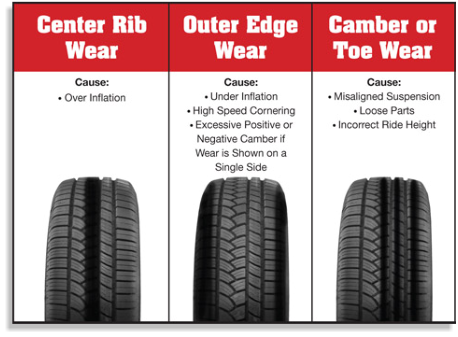 Moreover, winter tires hold summer asphalt even worse than winter tires. And economy class summer tires will always be inferior in terms of grip to expensive premium tires. Keep this in mind and choose your driving style according to the capabilities of your car and your tires.
Moreover, winter tires hold summer asphalt even worse than winter tires. And economy class summer tires will always be inferior in terms of grip to expensive premium tires. Keep this in mind and choose your driving style according to the capabilities of your car and your tires.
3. Don't skimp on tires, tires are the only link between your car and the road and your safety. Use summer tires in summer, don't use winter tires. Avoid all-season tires, they do not give good grip in summer or winter. Do not save money and buy cheap economy tires. It is better to overpay for a good set of tires and thereby save on body repairs, and even on treatment ...
As for the pattern itself, it is more necessary for the aesthetic perception of the tire, and even the tire manufacturers themselves say that the pattern is a marketing tool. You can't look at a tire display in a store and determine the composition of their rubber, can you? You can not.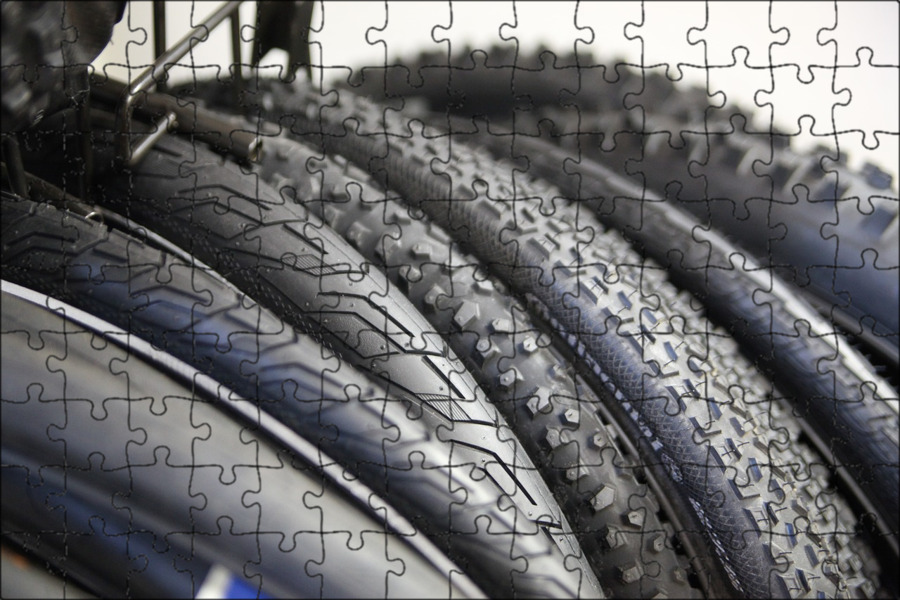 And to distinguish one drawing from another is very even. That's where they stand...
And to distinguish one drawing from another is very even. That's where they stand...
If you've ever paid attention to racing tires, in particular Formula 1 cars, you've probably noticed that racing tires have no pattern at all. There is a protector, but there is no pattern. And this is a racing type of tread for dry asphalt.
But rain tires already have a pattern, there is a rain-type tread, and the pattern is made in such a way as to most effectively remove water from the contact patch so that water does not interfere with the contact of the tire with asphalt. At the same time, the composition of the rubber is special, especially for wet asphalt, and it is he who sets the grip. Thus, the grooves in the rain tread cannot affect the grip as such, they only prevent the tire from losing contact with the road, and grip in the presence of contact provides rubber compound .
This logic is as follows:
rain tread type => effective removal of water from the contact patch => better contact between the tire and the road => less loss of initial grip properties => providing grip due to the rubber composition
wrong logic:
rain tread type => improved wet grip due to herringbone pattern
Practical advice
. Perhaps your trendy pattern is "painted" on the high-quality tread of expensive tires, then you have really good traction due to the good rubber compound. But even this does not give you a reason to be reckless, because even the best tires cannot bypass the laws of physics.
Perhaps your trendy pattern is "painted" on the high-quality tread of expensive tires, then you have really good traction due to the good rubber compound. But even this does not give you a reason to be reckless, because even the best tires cannot bypass the laws of physics.
5. When choosing tires, you should not chase after a beautiful tread pattern. You can't tell the quality of a tire from the picture, everything is determined by the composition of the rubber compound, which is not visible to the eye. Choose premium tires from leading manufacturers, rely on independent tire tests and research.
The degree of tread wear has another effect on tire grip. There is such a popular misconception: bald, that is, heavily worn tires do not hold the road well, especially wet, because there is no pattern. Of course, in the case of rain, this is partly true. Smooth tires - the same racing slicks literally float on a water film (hydroplaning phenomenon), and rain grooves in the tread, as I wrote above, help to drain water and avoid this.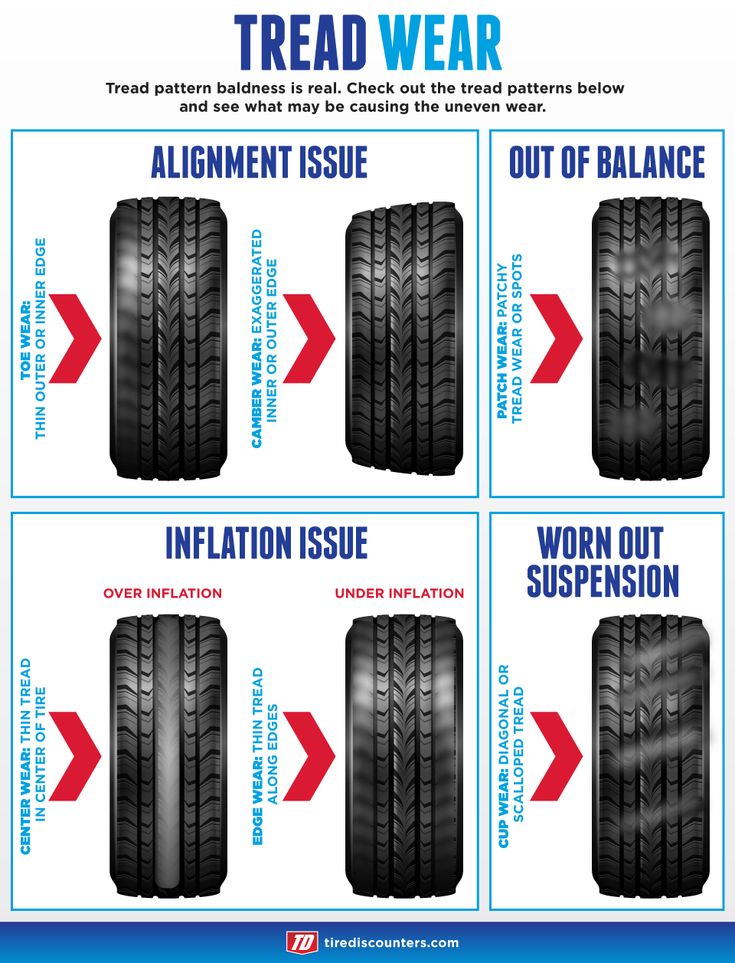
But this is not the only reason why bald tires hold the road worse, and in the case of dry asphalt, not at all. It's just that the composition of the tread rubber, which is responsible for traction, is located in the surface layer of the tire, deeper than which is another rubber that plays a different role. And when the tire wears out, this tenacious rubber simply does not remain, and the rubber under the tread cannot provide proper grip, since it is not designed for this. Thus, tread wear essentially does not mean abrasion of the pattern, but the disappearance of the rubber compound that provides good grip .
There is also an opinion that a half-worn tire has better grip than a new one, but this is more true in corners, and more on that in one of the following sections.
So it is the composition of the tread rubber that has the greatest influence on the grip of the tire with the road. And a wide, low-profile sports tire offers better traction than an eco tire with narrow and high tread, not because it is wide or with a large diameter, and not because it has a new asymmetric tread pattern, but because it has a sports tread with an appropriate rubber compound. .
As a result, incorrect logic:
Bald tire => Lack of tread pattern => Deterioration of adhesion
Correct logic:
Lysya tire => The absence of a rubber layer with a composition that provides good adherence to a good adherence => wise clutches
Practical recommendations
6. Do not be afraid to drive on tires with partial tread wear, because of this they only hold the road better. But driving on completely worn out "bald" tires becomes dangerous, especially on wet roads. Watch for wear and change tires to new ones in time.
Deformation of any body leads to its heating. The tire deforms during driving, especially during acceleration, braking and cornering, and, as a result, heats up . With rectilinear and uniform movement, it is also deformed, but to a greater extent due to vertical vibrations due to road irregularities. Therefore, the temperature of the tire, say, an hour after the start of the trip, differs significantly from its temperature before the trip, and even more significantly if the car was “annealed” - they braked a lot and intensively, accelerated and “tumbled” into turns with a breeze.
Therefore, the temperature of the tire, say, an hour after the start of the trip, differs significantly from its temperature before the trip, and even more significantly if the car was “annealed” - they braked a lot and intensively, accelerated and “tumbled” into turns with a breeze.
The grip coefficient of the tire depends on the temperature of the tire, and its maximum corresponds to a certain optimum temperature . That is, on a cold tire, the coefficient has some value, when heated, it increases, and when the tire overheats, it decreases again. The optimal temperature for different tires is different, for summer road tires it is in the range of 60-90 degrees, for racing tires it is higher and can exceed 100 degrees.
In normal road driving it is important not to overheat the tire, but in car racing it is important to avoid not only overheating but also underheating. Undercooling in a race means not enough friction coefficient, and therefore not enough piloting speed. Overheating is dangerous not only for a temporary deterioration in traction, but also for increased tire tread wear, which means a premature decrease in grip, but for a worn tire forever.
Overheating is dangerous not only for a temporary deterioration in traction, but also for increased tire tread wear, which means a premature decrease in grip, but for a worn tire forever.
Practical recommendations
7. If you are a fan of dynamic driving, went on a trip, and there is no scorching heat on the street, you should not immediately dynamically accelerate and brake and “lay” into turns. Give the tires some time to warm up to operating temperature and achieve maximum traction.
8. If you go to the race track, remember that from racing ordinary road tires can overheat and drastically deteriorate their performance either temporarily, while overheated, or already permanently, if you do not track their overheating in time and they wear out quickly.
So just the tire width affects the temperature stability and resistance to overheating and wear.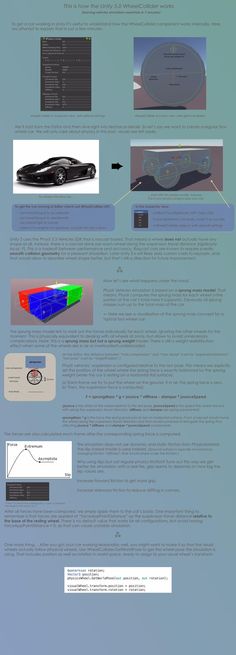 The wider the tire, the higher its heat capacity and the better the airflow, thus it removes heat better, heats up less and wears out less. Therefore, a wide tire has less risk of losing traction during active road or racing and retains its original traction properties longer. Although with the same composition, a wide tire initially has the same grip coefficient as a narrow tire, but it retains it longer . So for lovers of active “annealing”, a wide tire should be preferable to a narrow one.
The wider the tire, the higher its heat capacity and the better the airflow, thus it removes heat better, heats up less and wears out less. Therefore, a wide tire has less risk of losing traction during active road or racing and retains its original traction properties longer. Although with the same composition, a wide tire initially has the same grip coefficient as a narrow tire, but it retains it longer . So for lovers of active “annealing”, a wide tire should be preferable to a narrow one.
However, for racing drivers it is important to find a middle ground. After all, by increasing the width of the rubber beyond measure, as a result, you may not reach the optimum temperature. An overly wide tire will cool too much, and there is a risk that, no matter how hard we try, we will not heat the tire above 60 degrees, which means we will get a lower coefficient of adhesion than if we put a narrower tire and warm it up to the desired temperature.
So when the width of the tire profile is increased, the following logic takes place:
wide tire => less overheating and wear => long retention of the initial grip properties at increased loads
wrong logic:
wide tire > more contact patch area => more grip force Thus, tire width does not directly affect tire grip, but indirectly.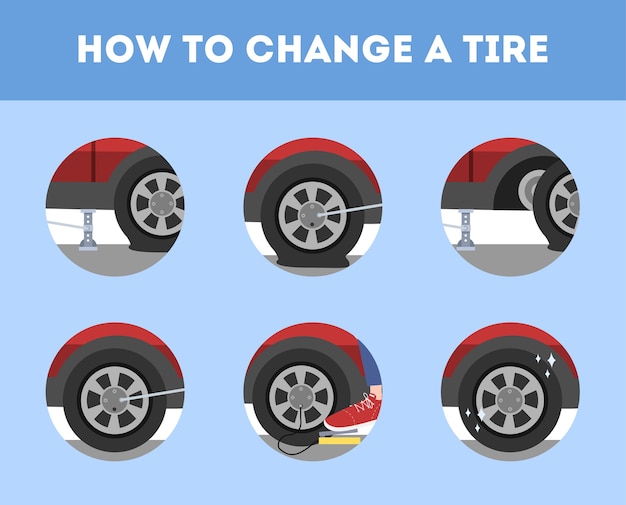 I repeat, with the same rubber composition, a wide tire initially has the same grip coefficient as a narrow tire, but retains it longer due to less risk of overheating and less wear.
I repeat, with the same rubber composition, a wide tire initially has the same grip coefficient as a narrow tire, but retains it longer due to less risk of overheating and less wear.
Practical advice
manufacturers. For the track, it is best to use specialized tires - semi-slicks or slicks.
10. Also remember that tires that are too wide on your particular vehicle may not warm up to operating temperature due to intense cooling, and then you will not be able to achieve maximum traction and fully exploit the potential of your car. In everything, a measure is needed - including the installation of tires of optimal width.
Another factor that affects the heating of a tire is the air pressure to which it is inflated. As I already wrote, the tire heats up from deformation. The greater the deformation, the greater the heating. And the more air pressure in the tire, the harder it is and the less deformation and the less heating. The reverse is also true: low pressure leads to rapid heating and possibly overheating. Therefore, in the instructions for any car, along with the recommended tire pressure, you can see a recommendation to pump tires when driving with a large load or at high speed.
And the more air pressure in the tire, the harder it is and the less deformation and the less heating. The reverse is also true: low pressure leads to rapid heating and possibly overheating. Therefore, in the instructions for any car, along with the recommended tire pressure, you can see a recommendation to pump tires when driving with a large load or at high speed.
So flat tires will impair driving performance due to more tire deformation. But this deformation is bad both in itself (it increases the slip, more on that below), and due to the increased heating of the tire.
Result:
reduced tire pressure => more softness of the tire => more tire deformation => increased heat => increased risk of temporary loss of grip and premature wear
Do not confuse tire tread temperature with tire air temperature. From the Law of Mendeleev-Clapeyron
PV = RT (7)
where P is the air pressure, V-the volume of air, R is a universal gas constant, T-air temperature,
It immediately follows, which is when the air temperature rises and increases and increases and its pressure, and vice versa, when it gets cold, the pressure decreases .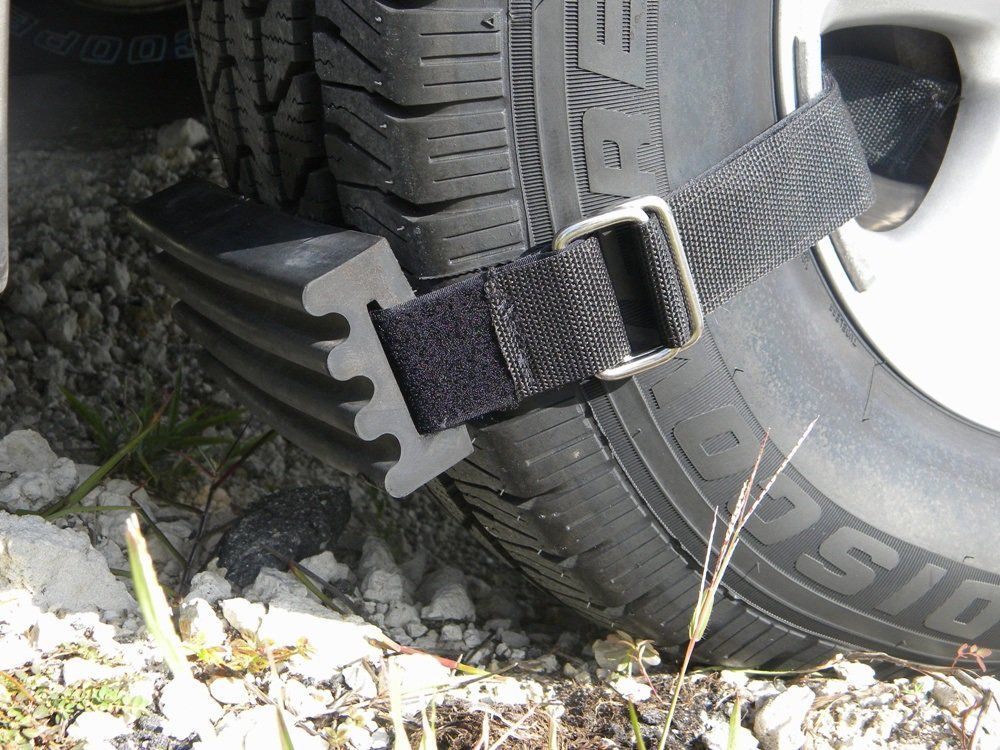 This means that if today at 0 degrees outside you inflated the tires to the optimum pressure, and tomorrow it gets cold to -15, you need to go pump up the tires . Although the air has not gone anywhere, its pressure has decreased markedly due to the decrease in temperature. Similarly, with a sharp warming, it makes sense to bleed air and get rid of excess pressure.
This means that if today at 0 degrees outside you inflated the tires to the optimum pressure, and tomorrow it gets cold to -15, you need to go pump up the tires . Although the air has not gone anywhere, its pressure has decreased markedly due to the decrease in temperature. Similarly, with a sharp warming, it makes sense to bleed air and get rid of excess pressure.
That is:
cold outside => lower tire temperature => lower tire pressure => need to pump tires
But this fact does not contradict the fact that before driving at high speed, including on the race track, it is necessary to inflate the tires to prevent them from overheating. After all, tires overheat from increased deformation due to lack of air pressure. And an excess of pressure leads to heating of the air in the tire itself.
Practical advice
11. Regularly (every 1-2 weeks) do a routine tire pressure check using a pressure gauge.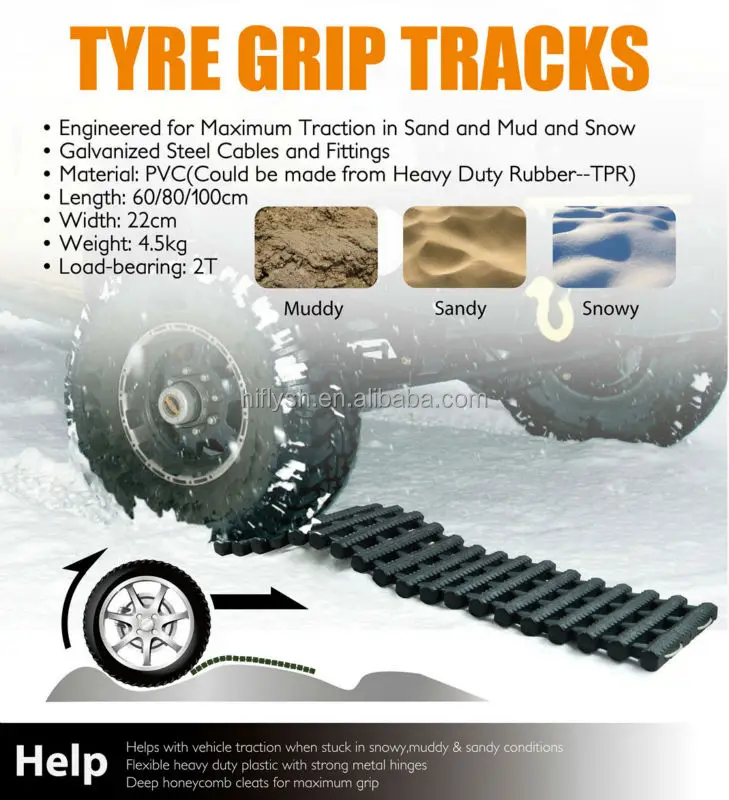 In the event of a sharp change in temperature outside, do an unscheduled tire pressure check. If the check showed a discrepancy between the pressure recommended by the VEHICLE manufacturer, ensure the required pressure - pump up flat tires or deflate over-inflated tires.
In the event of a sharp change in temperature outside, do an unscheduled tire pressure check. If the check showed a discrepancy between the pressure recommended by the VEHICLE manufacturer, ensure the required pressure - pump up flat tires or deflate over-inflated tires.
12. Before driving at high speeds and/or with heavy loads or on the racetrack, increase the tire pressure by approximately 20%. Do not forget to release excess air at the end of the trip.
13. Remember that the air pressure in the tires should be checked when the tires are cold - at least 2 hours after the end of the trip. If the car has traveled more than 1 km, the air in the tires heats up, and the pressure gauge will show too high pressure.
In this article, I examined the impact on the coefficient of adhesion of tires with the road of the following parameters:
And here are the conclusions:
1.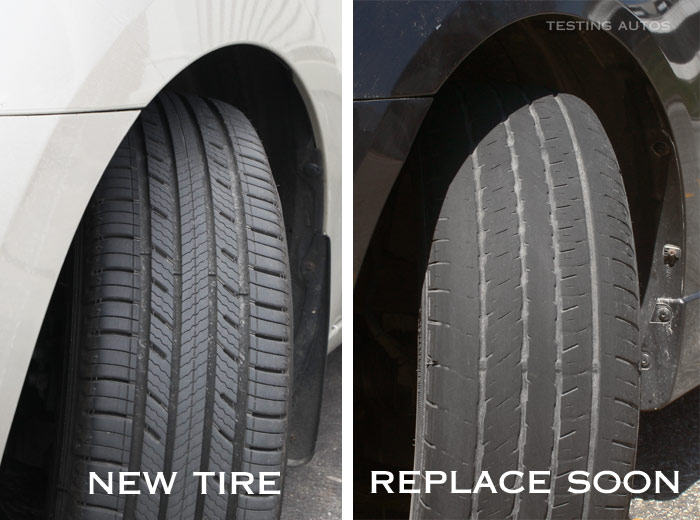 With the road surface all simple: tires hold well on asphalt and poorly on ice. The braking distance on these surfaces can differ even by 10 times.
With the road surface all simple: tires hold well on asphalt and poorly on ice. The braking distance on these surfaces can differ even by 10 times.
2. As for the tire itself, the tread rubber compound makes the biggest contribution to grip. The tread pattern does not affect grip on dry pavement, but indirectly affects wet pavement - it squeezes water out of the contact patch and prevents the tire from floating on a water wedge, but the grip itself provides the rubber composition. The appearance of the tread pattern is an aesthetic moment; you cannot determine the quality of the grip of the tire with the road by eye. Therefore, a bald worn tire is not bad for the lack of a pattern, but for the lack of tread rubber.
3. The coefficient of adhesion depends on the temperature of the tire and reaches its maximum when it is heated to an operating temperature of 60-90 degrees. The wide profile of the tire insures it against overheating and provides less wear and temperature stability due to better air cooling.